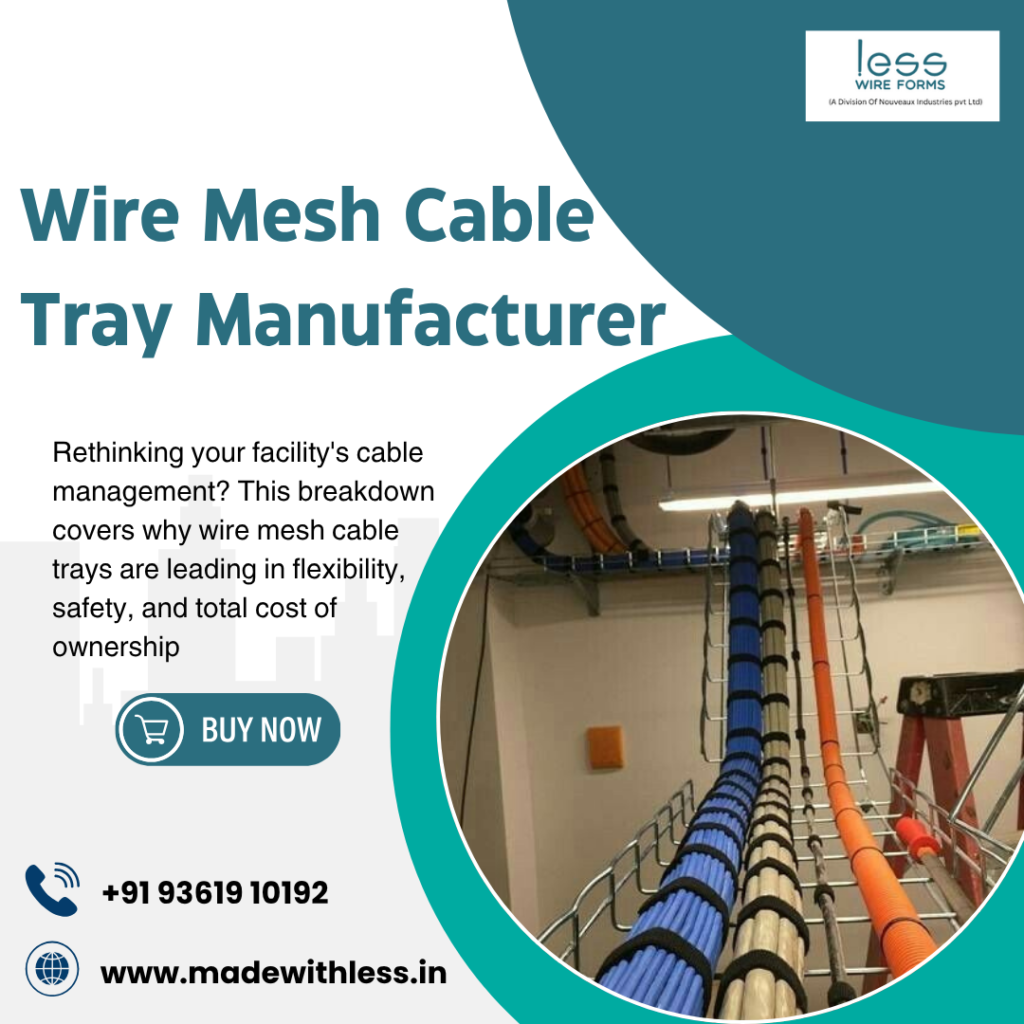In the complex world of industrial infrastructure, every component matters. When it comes to managing the lifeline of your operation—electrical power, data, and communication cables—the choice of support system is critical. While traditional solid-bottom cable trays have their place, wire mesh cable trays (also known as cable baskets or troughs) are increasingly becoming the go-to solution for modern industrial installations.

But why this shift? Let’s dive into the top advantages that make wire mesh cable trays a superior choice for demanding industrial environments.
1. Unmatched Ventilation and Heat Dissipation
In industrial settings, electrical cables, especially those carrying high loads, generate significant heat. When this heat is trapped, it can degrade cable insulation, reduce efficiency, and shorten the lifespan of your critical systems.
- How Wire Mesh Helps: The open-grid design of wire mesh trays allows for maximum airflow around the cables. This natural ventilation passively cools the cables, preventing heat buildup and ensuring they operate within their optimal temperature range. This translates to improved safety, reduced energy loss, and longer cable life.
2. Superior Flexibility and Easy Reconfiguration
Industrial facilities are dynamic. Production lines change, new machinery is installed, and technology upgrades are a constant. A rigid cable management system can become a major obstacle.
- How Wire Mesh Helps: Wire mesh trays are incredibly easy to modify. Adding, removing, or rerouting cables is a simple process—often without needing special tools. Sections can be easily cut, and new branches can be added with standard fittings. This future-proofs your installation, saving significant time and money on future expansions or modifications.
3. Exceptional Strength with Lightweight Design
Don’t let the lightweight nature fool you. Made from high-tensile steel wire (often with a durable galvanized or stainless steel finish), these trays offer an excellent strength-to-weight ratio.
- How Wire Mesh Helps: The lightweight design makes them easier and faster to install, reducing labor costs. Despite their weight, they are engineered to support substantial loads, making them perfectly capable of handling heavy cable runs. Their reduced weight also places less stress on support structures.
4. Complete Visibility for Easy Inspection and Maintenance
Troubleshooting electrical issues in a crowded conduit or a solid-bottom tray can be like finding a needle in a haystack. Wire mesh trays eliminate this guesswork.
- How Wire Mesh Helps: The open design provides 360-degree visibility of all cables. This allows maintenance teams to quickly identify wear and tear, damaged insulation, or the specific cable they need to work on. This visual access drastically reduces diagnostic time and minimizes downtime during critical maintenance windows.
5. Built to Withstand Harsh Environments
Industrial environments are tough—exposure to dust, moisture, chemicals, and temperature fluctuations is common. Wire mesh trays are built to endure these challenges.
- How Wire Mesh Helps:
- Corrosion Resistance: Standard galvanized steel is highly rust-resistant, while stainless steel options (e.g., 304 or 316) are ideal for highly corrosive environments like chemical plants, food processing facilities, or coastal areas.
- No Liquid Trapping: Unlike solid trays, the mesh design prevents the accumulation of water, dust, and debris. Any spillage or condensation simply drains through, preventing a host of potential problems.
6. Cost-Effectiveness
When you consider the total cost of ownership, wire mesh trays often come out ahead.
- How Wire Mesh Helps:
- Lower Material & Shipping Costs: They use less material than solid trays, making them less expensive to purchase and ship.
- Faster Installation: Their lightweight and modular nature lead to quicker installation, cutting down on expensive labor hours.
- Reduced Lifetime Costs: The savings from easier maintenance, reconfiguration, and extended cable life add up significantly over the years.
7. Safety and Compliance
A well-managed cable system is a safe cable system. Wire mesh trays contribute to a safer work environment in several ways.
- How Wire Mesh Helps: By preventing heat buildup and allowing for proper cable segregation (e.g., separating power and data cables), they reduce fire risks. Their design also naturally complies with many international standards (like NEC, IEC, and UL) that mandate proper cable support and ventilation.
8. Aesthetics and Organization
While functionality is key, the clean and organized appearance of a wire mesh cable tray installation should not be overlooked. The structured, visible cable runs look professional and are a hallmark of a well-designed facility.
Conclusion: Is a Wire Mesh Cable Tray Right for Your Project?
Wire mesh cable trays are more than just a cable holder; they are a strategic investment in the efficiency, safety, and adaptability of your industrial operation. Their unique combination of ventilation, flexibility, strength, and cost savings makes them an ideal solution for a wide range of applications, from manufacturing plants and data centers to wastewater treatment facilities and power generation plants.
If your priority is a future-proof, easy-to-maintain, and highly durable cable management system, the answer is clear: look no further than wire mesh cable trays.
